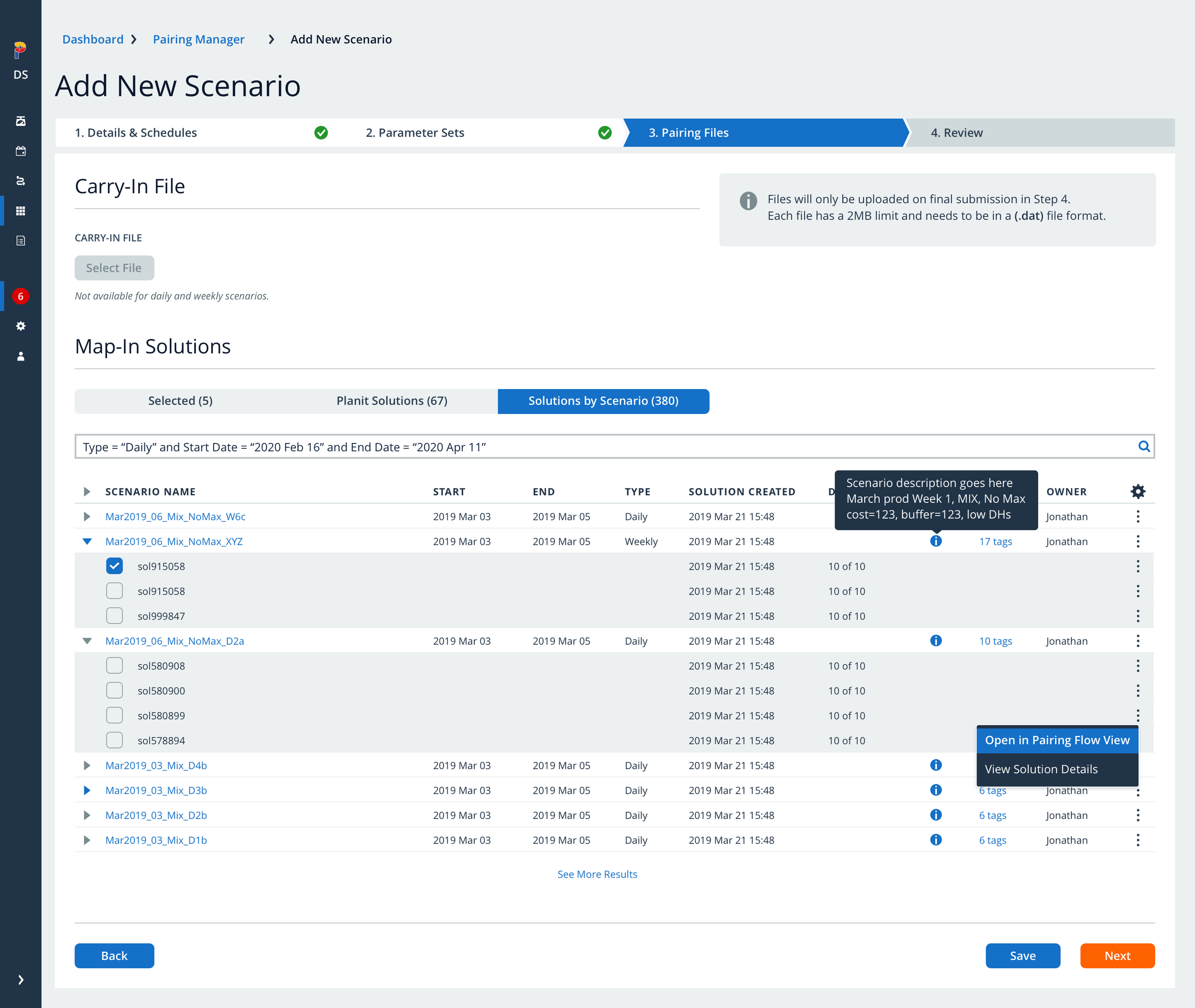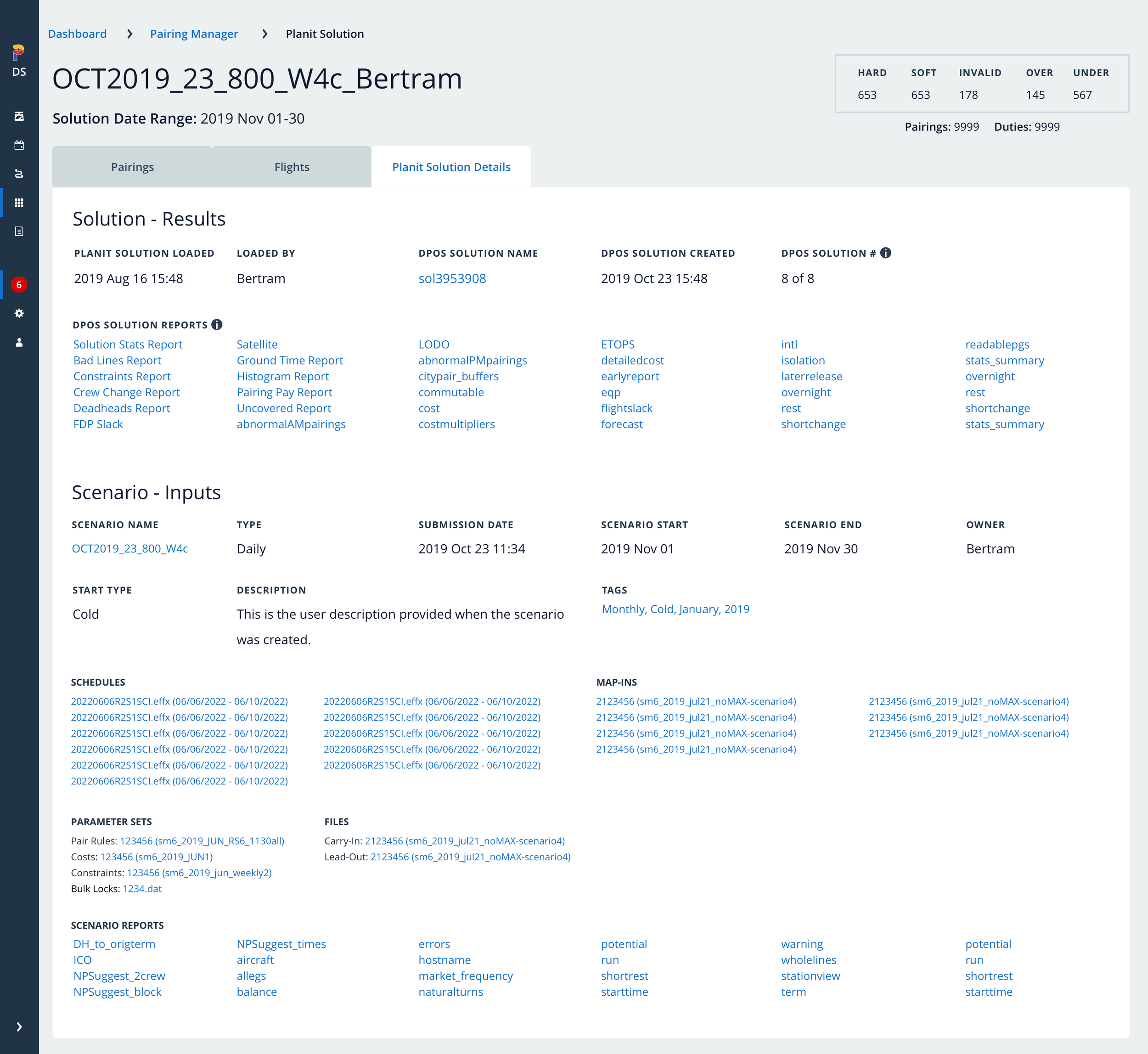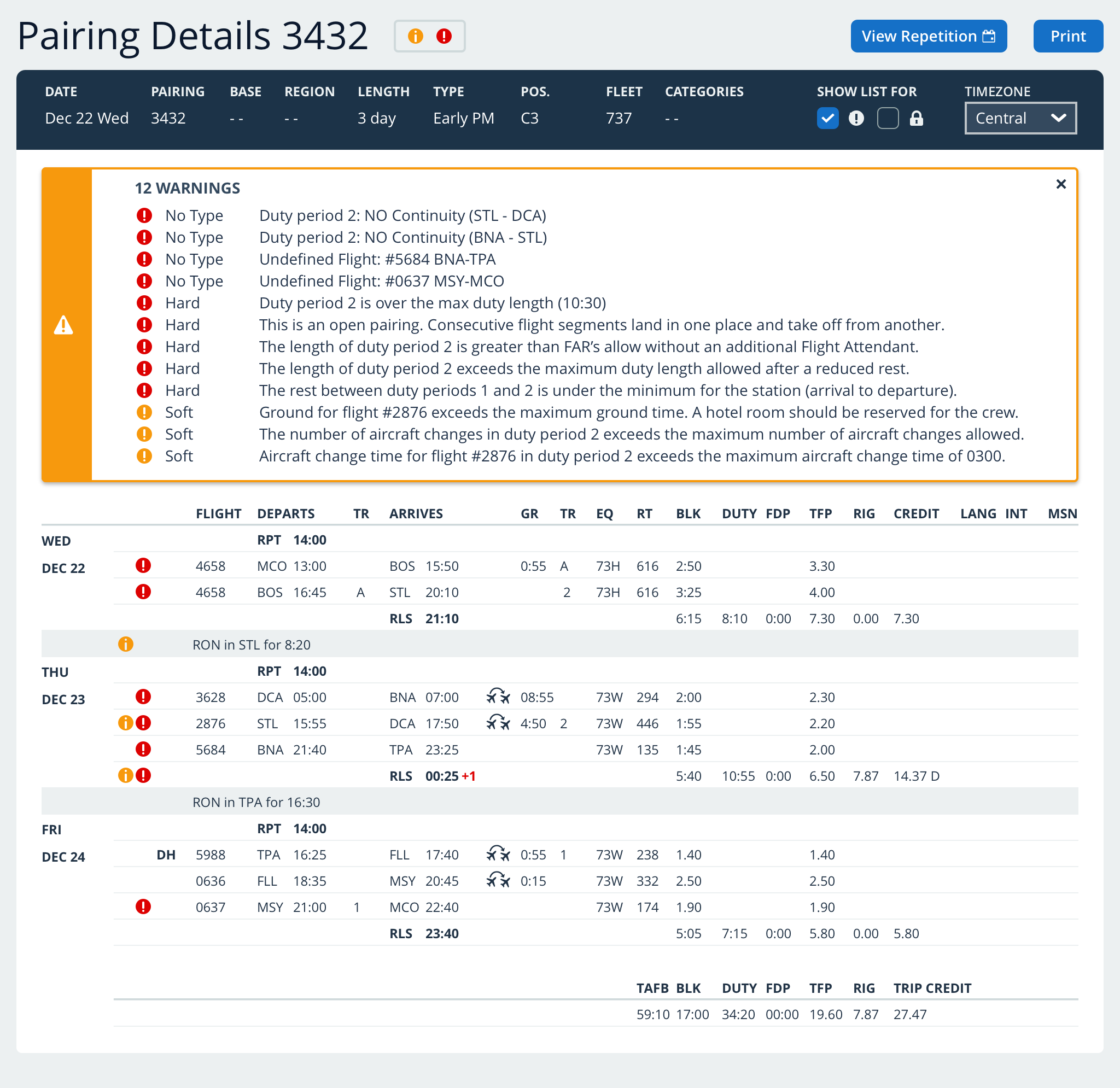
Driving Pandemic Recovery
Client: Southwest Airlines
Role: Experience Designer
Team: Experience Researcher, Experience Director
Tools Used: Pencil & Paper, Sketch, Invision, Zeplin, Abstract, Illustrator, Google Sheets (notetaking), Whiteboards, Sticky Notes
Summary:
Conducted and socialized research, seamlessly integrating UX with an agile delivery model, to replace aging tech and establish a strategic vision for the future of crew planning.
Successfully modernized Southwest’s mission-critical Crew Planning processes—a feat which proved too difficult for preceding vendors.
Delivered a data analysis platform which allowed the airline to recover from a crisis, saving $30M in its first release, building trust and securing new business for our consultancy.
Background:
Southwest Airlines partnered with Stellar Elements to modernize its Crew Planning tools and processes. Embedded in Southwest technology teams, we were tasked with building a robust next-gen platform to support Crew Planners, the internal admin users who manage the airline’s advanced crew planning and scheduling processes.
Put plainly: Crew Planning is a beast. It’s one of the most notoriously complicated operational processes in the airline industry, and one of the most mission-critical: crew-related expenses are typically the second largest cost for airlines after fuel.
Realizing the complexity of the domain, my team and I conducted a series of large-scale research engagements to understand Crew Planners’ needs within the overarching ecosystem and design a replacement flexible enough to support ever-changing business requirements.
Goals:
Discover the users’ experience and needs related to Crew Planning within the total workflow.
Gain Insight into how Crew Planning impacts business objectives.
Identify risk and exposure created by the current system.
Understand what’s required to give the Crew Planners the best tools to transform their jobs as specialists to become analysts focusing on future scenarios and planning.
Before and after: Search patterns redesignedResearch
Stakeholder Interviews
We interviewed stakeholders and subject matter experts in Crew Planning and Technology to gain first-hand awareness of the company context and to begin to define the research objectives.
Contextual Inquiries
I worked closely with an Experience Researcher, who directed and scheduled our research activities, while I managed equipment, note taking, and creation of visual assets to share what we learned. We collaborated closely throughout the engagement to create interview protocols, conduct research, synthesize data, and present our findings.
We conducted 90-minute 1:1 sessions with 8 Crew Planners, interviewing them in the context of their work while they performed their tasks, observing their activities first-hand, and asking them to explain what they were doing and why. This allowed us to understand how Planners use their existing tools, and to gather rich insights about their unique needs, pain points, and role within the overarching business processes.
Contextual inquiries allow designers to build trust and understand user challenges firsthand.
A Planner shares his process using collaborative design during a contextual inquiry.
The old system, surrounded by post-its to help this Planner remember dozens of work arounds and manual processes.
Collaborative design allowed us to map complex processes understood by only a handful of advanced users.
Synthesis
Affinity Diagramming
We accumulated over 800 data points during contextual interviews, from which we constructed a series of information trees built from the bottom up. Using this inductive analysis method, we organized the research data into a hierarchy across 8 boards revealing common issues, needs and themes and began to identify potential opportunities. Once the affinity diagramming was completed, our team identified 41 opportunities for the new Crew Planning product.
Visualizing the Data
Consolidated Workflow Diagram
Designing collaboratively with Planners, I created a consolidated user workflow diagram for Crew Planning’s processes to serve as a summary model of the activities users engage in as they complete their work, along with a monthly timeline of events.
User Journey Map with Sentiment Graph
I also created a Journey Map to foster empathy, provide clarity, and guide product decisions, visualizing the Crew Planners’ experience, mindset, pain points, and breakdowns as they move through the planning process.
Readout
After synthesizing the data, we presented the insights, risks, and guiding principles we’d surfaced during research activities.
Wall Walk
We then walked Southwest team members through the Affinity Diagram boards, sharing the cumulative results and stories, before leading them through several participatory activities designed to immerse them in the research and to surface potential opportunities and insights.
Opportunity Prioritization Workshop
We worked with the Southwest team, through a series of dot voting exercises, to identify the right opportunities to target, distilling 40+ opportunities across 10 categories down to seven immediate priority features for 2020.
Affinity diagramming to surface user needs and product opportunities
Our Experience Researcher introduces team members to the dot voting exercise.
Stakeholders review findings and vote on product opportunities surfaced directly from user observation
Strategic Vision + Product Design
Once foundational features were prioritized based on user needs, they were roadmapped, and I began work on the initial designs, creating wireframes, exploring possible patterns, and defining information architecture. I worked closely with product owners, subject matter experts, and Crew Planners to establish a regular cadence for design reviews and requirements gathering.
We tested designs with Crew Planners via a clickable prototype and talk-aloud protocol, to clarify needs and refine the interaction.
This was the first of 5 research engagements and the first of 8 user testing cycles which guided continuous delivery and informed product strategy. Over the next 2 years, we worked hand-in-hand with developers to create and build the successful first release of the new unified planning platform: Crew Planit.
A stepped flow allows users to easily create new schedules from templates which are presented using expanding rows to communicate the relationship between Solutions and their parent Scenario
Sortable expanding data table to track schedules in varying states of optimization
Dense data is organized using searchable tables. Indicators and row states allow users to evaluate and resolve issues with ease.
Details offer a comprehensive view of a Solution's inputs and results
Progressively disclosed inline notifications allow users to evaluate varying levels of risk and optimize trips with minute precision.
Flow View allows users to visually analyze flight routes and optimize trips.
The Results
Our work with Crew Planners was adopted as the standard for requirements gathering across Southwest Technology, resulting in division-wide communication, velocity, and user experience improvements.
Our product successfully modernized integral business processes: When Southwest was forced to ground a large segment of its fleet and revise all 25,000 crew schedules accordingly, our new Crew Planning product enabled analysts to recover months of work in weeks, a previously-impossible achievement, saving the airline an estimated $30 million in lost costs.












